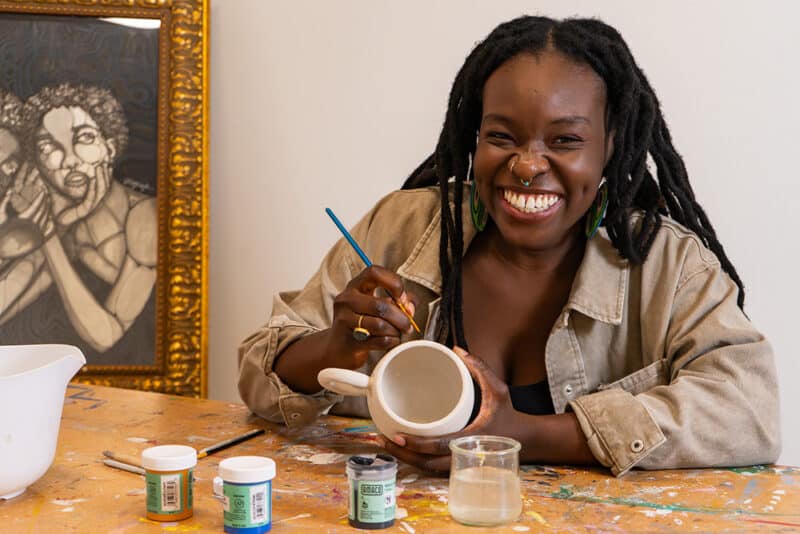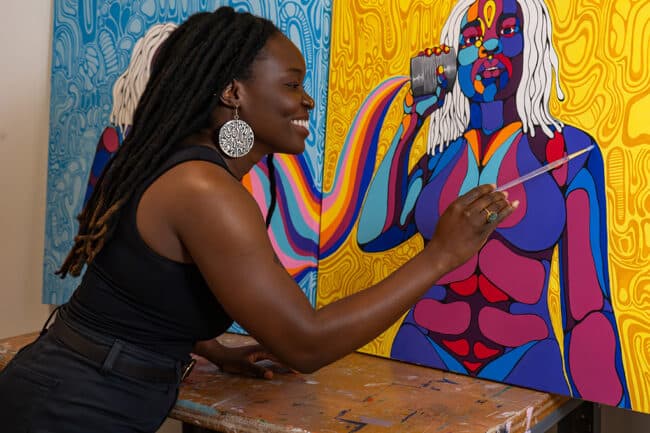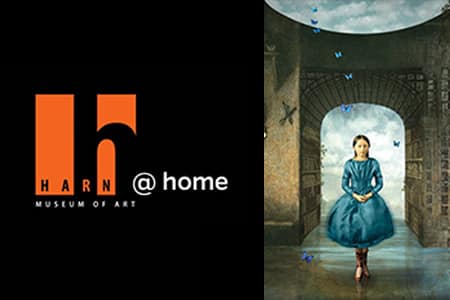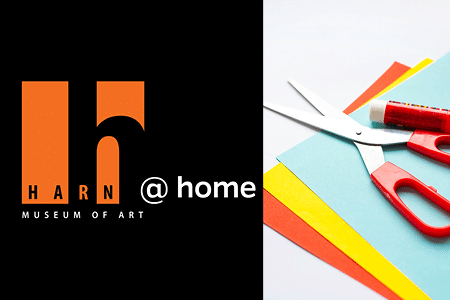In April, Development Communications Intern Brianna Lapwing sat down with Artist-in-Residence Jessica Clermont, whose residency exists in tandem with the special exhibition Silver Linings: Celebrating the Spelman Art Collection. Generous support for this project is provided by Art Bridges. Click here to learn about this insightful conversation!

At the beginning of your residency, you hosted a workshop. Tell me more about that workshop and how it went!
Clermont: I hosted a workshop with the docents and a group of university students. Both groups carried out the same activity, an activity inspired by Benny Andrews and his collage work that is part of Silver Linings. It was a partner activity involving representation, trust and leaning into community. The participants created a collage portrait of their partner, with this idea of exploring gaze and experimenting with how to represent this person after you get to know them a little bit. Then, participants had to trust themselves to portray their partner correctly, and in turn trust that they will also be portrayed correctly. After the activity, we placed all the portraits together on the wall to create a community. It was super sweet and wholesome to see the students and docents admiring each other’s work and becoming friends. For me, it was initially a challenge to embrace a flow state of creation, to embrace the journey and focus on the process of creating with different, new materials, rather than the end result. It made me think differently about being an educator, how I can craft workshops to facilitate different forms of engagement with the exhibition. It also made me think differently about my practice, about how the activity can guide my work. For instance, I became really interested in layering, in the sort of placement that happens when working with collage. I don’t typically work with collage, but the activity and inspiration from Benny Andrew’s work made me think differently about composition and intention. Now, I’m more interested in how I create depth.
How would you describe your general artistic practice?
Clermont: I’m traditionally a 2D artist, working with drawing and paint. When I came to UF to study art, I was an assistant for the ceramics lab specialist and became friends with graduate students who also introduced me to ceramics. I took a couple of ceramics classes and just fell in love with it. I think with ceramics and 3D art, it forces me to slow down and pay more attention to the material I’m using. I’m also interested in the way art exists with space, and the difference that exists between 2D, 3D, and even graphic work. With my own practice, I just like to dive into what I can get my hands on. I’ve made my own earrings, painted on shoes, painted on fabrics. I love to explore.
How do you understand your residency in connection to Silver Linings?
Clermont: I’ve used the activities I’ve planned to influence and guide my work; like how the activity inspired by Benny Andrew’s work made me curious about layering. The art and artists within this exhibition have inspired me to apply to my own practice certain principles of how they create and what they create. The artists in this exhibition also tell stories very well. They’ve made me think about how I can enhance the stories I tell in my pieces. I’ve also been taking a lot of time to really explore what my own “silver lining” is, and how to best portray that visually, artistically. How I can use what I’ve learned and analyzed in this exhibition, with my own interests and methods of creation, to create something that is both true to my practice and an expansion of this exhibition. While facilitating the student engagement and docent activities, I had the partners ask each other about their passions. Later, I was asked the same question, and knew my response was that I am passionate about identity, visibility, and having a space and platform to feel seen. That led me to think more about my own silver lining, and I think my silver lining is that I can exist freely and creatively and bridge a gap that exists between my own experience and my mom’s experience as an immigrant. My mom emigrated from Haiti and worked tirelessly to provide for my family and me. So, in this residency I’m curious about exploring the differing generational experiences that exist within my family dynamic, between me, my mom as an immigrant, and my grandmother as a Haitian, within a body of work. The silver lining is that I can tell our stories, that I have the opportunity to create, and don’t have to fight so much for stability because of how these matriarchs provided for me.
What type of work do you plan to produce in this residency, and what type of impact do you intend to make with your work?
Clermont: I’m planning to produce work that represents and communicates my silver lining. Although through this I’ll be telling my own story, I hope that those who come and see my work see themselves within it. Or, their mom or grandma. My hope is always to facilitate some type of connection. I really want my work to prompt people to think a bit deeper than they were, to connect with themselves a bit more. To have an internal dialogue, questioning maybe why I represented something how I did, to hopefully generate some ideas of their own. I feel that on the daily, people are always so busy trying to grind out their responsibilities and get things done. My hope is that when others see my work, they take a pause and have a form of self-actualizing moment. That they realize where they are, and a bit more about who they are.
Visitors are welcome to engage in conversation with Jessica in her studio adjacent to the Silver Linings exhibition, Tuesday – Thursday from noon to 5 pm through June 26.



